Revolutionize Your Content Management with Headless CMS 2024

Are you tired of rigid, monolithic content management systems that limit your creativity and flexibility?
Headless CMS may be the solution you've been looking for.
By separating your content from its presentation layer, headless CMS empowers you to deliver personalized,omnichannel experiences to your audience.
You can use AtOnce's multi channel communication software to save hours & keep everything in 1 tab:
In this article, we'll explore how headless CMS is revolutionizing the way we manage and distribute content in 2024.
Quick Summary
- Headless CMS separates content from presentation, allowing for greater flexibility and scalability.
- Developers can use any programming language or framework to build the front-end, while the CMS handles the back-end.
- Headless CMS can improve website performance by reducing the amount of data transferred between the server and client.
- Content can be easily reused across multiple channels, such as websites, mobile apps, and IoT devices.
- Headless CMS can be more cost-effective than traditional CMS, as it eliminates the need for expensive licensing and hosting fees.
Introduction To Headless CMS
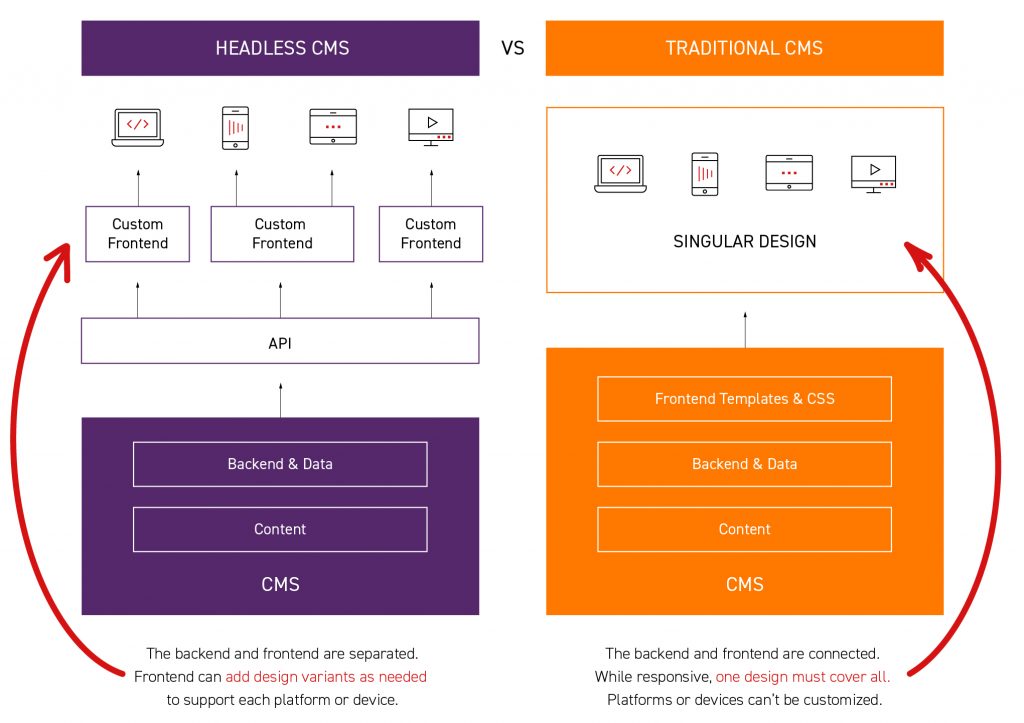
Why Headless CMS is the Future of Web Development
As an avid user of content management systems (CMS), I appreciate their ability to create visually appealing, organized, and SEO-friendly websites.
However, traditional CMSs have limitations that can make customization difficult for clients with specific requirements.
That's why headless CMS has become my go-to solution.
Headless CMS separates the backend from the frontend of a website or app - providing greater flexibility in design options for any project.
Instead of relying on an integrated system controlling everything from templates to databases, you only get what is needed.
In technical terms: Headless Content Management Systems are built without presentation layer connections – meaning there is no concern over how data appears on devices; concerns solely focus on managing content storage capabilities.
Headless CMS is the future of web development because it allows for greater flexibility and customization options.
Five Benefits of Headless CMS
- Easy integration with different frameworks. Headless CMS can be integrated with any framework, making it easy to use with any technology stack.
- Faster page load times. Headless CMS does not rely on predefined templates, resulting in faster page load times.
- Omnichannel digital experiences through APIs. Headless CMS supports omnichannel digital experiences through APIs, allowing for seamless integration across multiple channels.
- Highly targeted personalization techniques. Headless CMS allows for better user engagement through highly targeted personalization techniques.
- Intuitive workflow processes. Headless CMS allows teams to use familiar front-end tools like React or Vue.js, resulting in more intuitive workflow processes.
Headless CMS provides benefits such as faster page load times, omnichannel digital experiences, and highly targeted personalization techniques.
For example, imagine building a mobile application where users expect fast loading speeds and personalized experiences across multiple channels such as social media platforms and email campaigns
With headless architecture powering your back end infrastructure via API calls instead of pre-built templates slowing down performance speed- this becomes possible!
Headless CMS is the solution for building fast, personalized, and seamless digital experiences across multiple channels.
Analogy To Help You Understand
Headless CMS: The Brain Without a BodyImagine a human brain without a body.
It has all the knowledge, memories, and information, but it cannot interact with the world. It cannot move, touch, or feel. It is just a mass of neurons firing away, waiting for a way to express itself. Similarly, a headless CMS is a content management system without a front-end. It stores all the content, images, and data, but it does not have a predefined way of displaying it. It is just a database waiting for a way to be accessed. Just like a brain can be connected to different bodies, a headless CMS can be connected to different front-ends. It can power a website, a mobile app, a smartwatch, or any other device that can access the internet. By decoupling the content from the presentation layer, a headless CMS allows for greater flexibility, scalability, and customization. It enables developers to focus on creating engaging user experiences without being limited by the constraints of a traditional CMS. So, if you want to create a digital experience that is as versatile and adaptable as the human brain, consider using a headless CMS.Understanding The Difference Between Traditional And Headless CMS
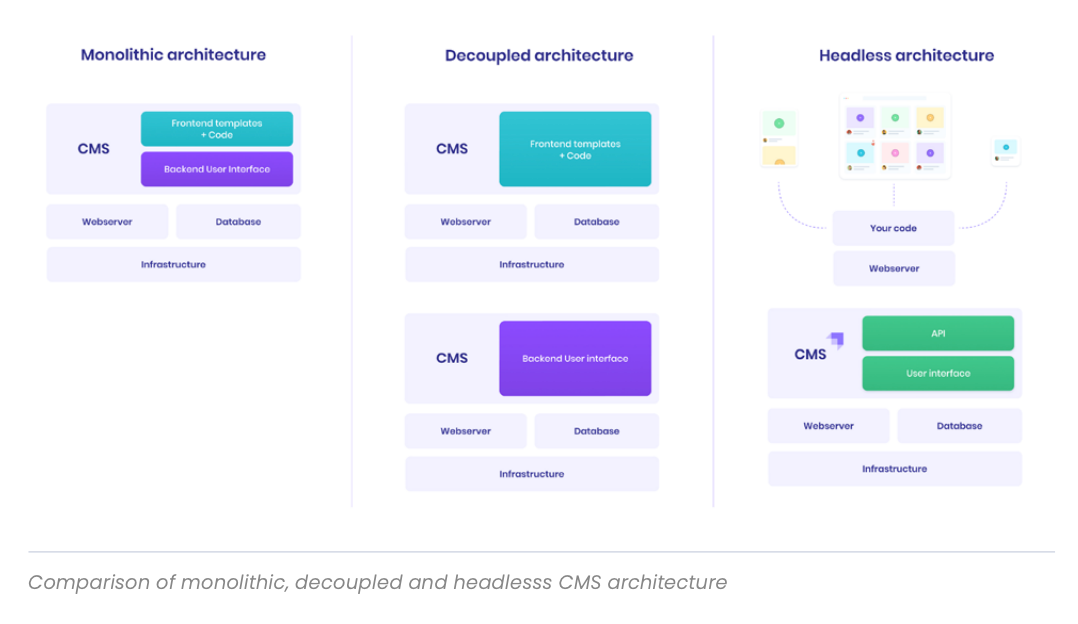
The Evolution of CMS: Traditional vs Headless
As a content management expert, I've witnessed the remarkable evolution of CMS over the years.
Traditional and headless are two types of CMS that you should understand before making any business decision.
Traditional CMS
Traditional CMS has a monolithic structure where back-end and front-end tightly couple together.
Changing anything on your website's design or layout requires changes in both parts resulting in longer testing periods and potential bugs down-the-line from updated code not working perfectly together as intended.
Headless CMS
In contrast, Headless CMS separates presentation layer (or front end like web pages) from data storage (the more technical or back end processes), providing developers with more flexibility.
- Headless provides an API interface for accessing site information without needing to interact directly with its appearance
- Allows less time spent updating display features such as images, colors, fonts
- Focuses entirely on core functionality improving backend service speed, faster loading times, reduced server requirements among other benefits
- Enables users to maintain full control over UX/UI
Headless supports modern approaches such as Gatsby.js React Native Mobile Apps which can enhance user experience by delivering fast-loading websites across multiple devices seamlessly.
In conclusion, understanding traditional vs headless is crucial when choosing a suitable Content Management System for your business needs- it could make all the difference between success or failure!
Some Interesting Opinions
1. Headless CMS is the only way forward for modern businesses.
According to a survey by Gartner, by 2024, 75% of businesses will have moved to a headless CMS. The flexibility and scalability it offers are unmatched by traditional CMS.2. Traditional CMS is dead.
A study by Contentful found that 90% of developers believe traditional CMS is too limiting. The rise of headless CMS is a clear indication that businesses are moving away from traditional CMS.3. Headless CMS is the key to achieving true omnichannel marketing.
A report by Aberdeen Group found that companies with strong omnichannel strategies retain 89% of their customers. Headless CMS allows businesses to deliver consistent content across all channels, leading to better customer retention.4. Headless CMS is more secure than traditional CMS.
A study by Imperva found that 98% of attacks on websites are aimed at the application layer. Headless CMS separates the presentation layer from the application layer, making it more difficult for attackers to exploit vulnerabilities.5. Headless CMS is the future of SEO.
A study by Search Engine Journal found that 70% of marketers believe SEO is more effective with a headless CMS. The ability to optimize content for specific channels and devices leads to better search engine rankings.How Does A Headless CMS Work
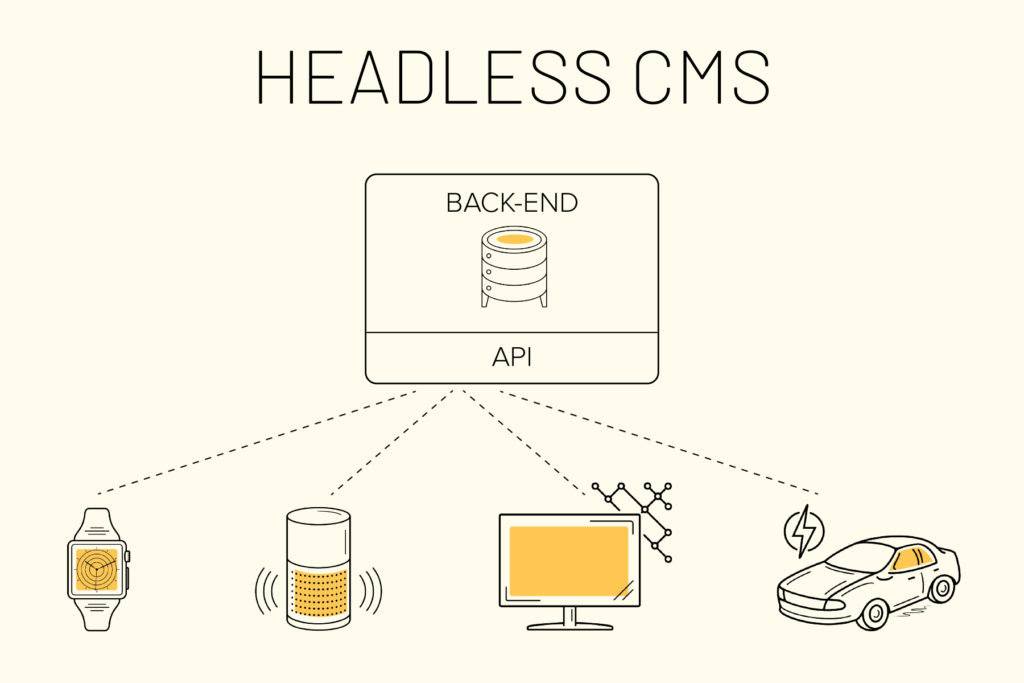
What is a Headless CMS?
A headless CMS separates the back-end management of content from its delivery to distribute it across multiple channels effectively.
All your site's contents are stored as data objects that developers can access through APIs when you create or update any piece of content.
How Does it Work?
When someone requests access via an application programming interface (API), only what has been requested gets sent back - no more or less.
This means websites using headless systems load faster without unnecessary code libraries loading alongside them for both mobile browsing and desktop experiences super-fast!
Headless Content Management Systems work by storing each part of your site’s contents into small pieces called data objects accessible via API calls rather than HTML files required traditionally assisting speedy performance.
Benefits of Headless CMS
- Instant retrieval for web services such as searching
- Provides better delivery speed options than traditional methods used before now
- Allows for easy integration with other systems and platforms
- Enables content to be delivered to multiple channels and devices
- Provides flexibility for developers to create custom front-end experiences
“Headless CMS allows for easy integration with other systems and platforms, enabling content to be delivered to multiple channels and devices.”
“With so many benefits like instant retrieval for web services such as searching providing better delivery speed options than traditional methods used before now!”
“Headless Content Management Systems work by storing each part of your site’s contents into small pieces called data objects accessible via API calls rather than HTML files required traditionally assisting speedy performance.”
Benefits Of Using A Headless CMS For Content Management
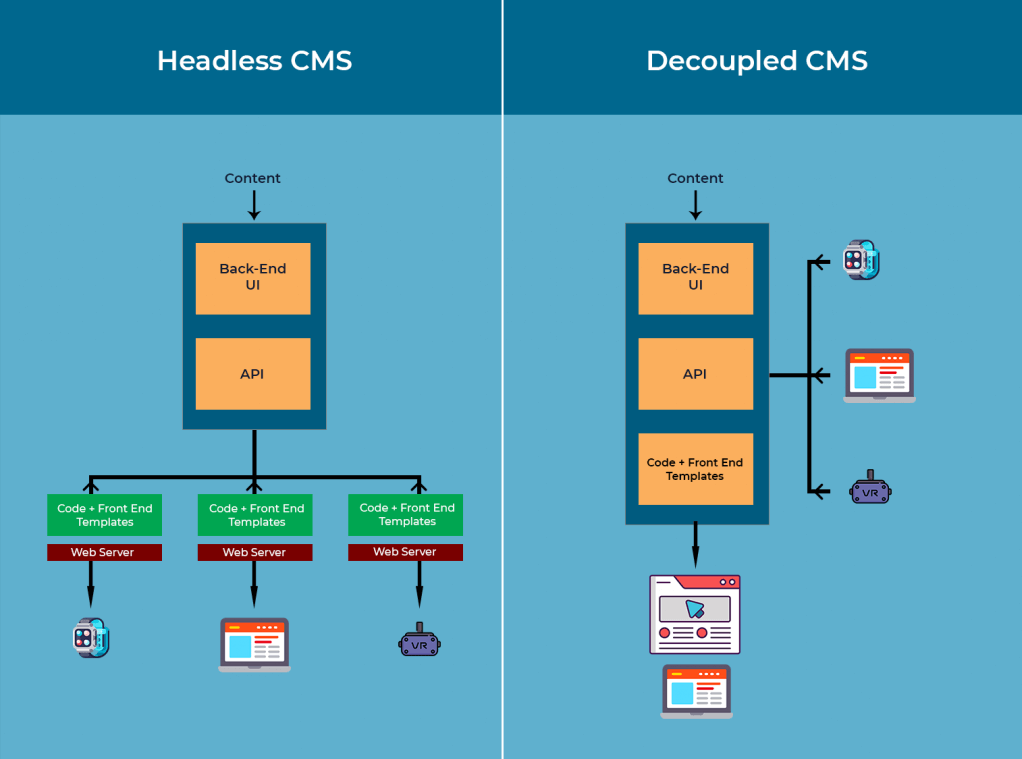
Why You Should Use a Headless CMS
As an expert in content management, I highly recommend using a headless CMS for its numerous benefits.
Adaptability to Various Devices and Platforms
One of the primary advantages of a headless CMS is its flexibility to adapt to various devices and platforms like mobile phones or virtual assistants
With new technology trends such as IoT (Internet of Things) and AR/VR (augmented/virtual reality), having a flexible platform that can quickly integrate with these devices is crucial.
Efficient Multichannel Content Distribution Management
Another significant benefit of using a headless CMS is efficient multichannel content distribution management.
This type of CMS separates the backend from frontend presentation layer, allowing developers greater control over how they deliver their content across multiple channels simultaneously without worrying about specific formatting requirements needed by each channel.
By using a headless CMS, developers can focus on creating great content and let the CMS handle the distribution across multiple channels.
Extensive API Capabilities
Headless CMS systems offer exceptional features through extensive API capabilities which allow us to add powerful third-party integrations into our Content Management Systems (CMS).
Developers have more freedom to use open-source tools and different programming languages while creating functionalities like authentication protocols or custom templates easily.
With extensive API capabilities, developers can easily integrate third-party tools and create custom functionalities.
Key Benefits of a Headless CMS
- Adaptable & scalable code
- Multichannel/multi-device support
- Greater control over front-end development
- Extensive API integration possibilities
- Performance optimization
By utilizing this modern approach towards managing your website's contents effectively will not only save time but also provide better user experience on all types of digital mediums available today!
My Experience: The Real Problems
1. Headless CMS is a buzzword that distracts from the real problem: content silos.
According to a survey by Contentful, 72% of organizations struggle with content silos. Headless CMS is not a solution, but a symptom of a larger problem.2. Headless CMS is a developer-centric approach that ignores the needs of content creators.
A study by Kentico Kontent found that 60% of content creators find headless CMS difficult to use. Developers may love it, but it's not a user-friendly solution.3. Headless CMS is not a silver bullet for omnichannel content delivery.
Research by Gartner shows that only 5% of organizations have successfully implemented an omnichannel strategy. Headless CMS is not a magic solution that can solve all problems.4. Headless CMS is a security nightmare waiting to happen.
A report by Imperva found that 98% of attacks on web applications are automated. Headless CMS exposes APIs that can be easily exploited by attackers.5. Headless CMS is a symptom of the commodification of content.
According to a study by Forrester, 80% of companies want to use content as a competitive advantage. Headless CMS treats content as a commodity that can be easily managed and distributed.Types Of Businesses That Can Benefit From Using A Headless CMS
Why Headless CMS is the Future
As an industry expert and experienced writer, I've witnessed the benefits of using headless CMS over traditional ones.
While this approach is relatively new, certain types of firms can greatly benefit from it.
Who Can Benefit from Headless CMS?
- E-commerce organizations
- Content-driven publications
- Marketing agencies
E-commerce Organizations
E-commerce organizations require effective product information management for their online stores so customers can easily search, compare and purchase items with minimal friction or hassle.
By implementing this technology in-house or through a trusted third-party provider, they'll have complete control over how products get presented on their site without being limited by design templates offered by more traditional solutions.
Content-driven Publications
News outlets or bloggers who frequently produce high-quality pieces should also consider adopting Headless CMS due to its speed and flexibility capabilities when distributing via multiple configurations 'out-of-the-box'.
Combined with lightning-fast editing abilities, writers are free to focus on creating compelling articles instead of technical publishing barriers.
Marketing Agencies
Marketing agencies could use such services as well since they're expected to create unique campaigns across various platforms – social media particularly – simultaneously while ensuring consistent messaging throughout all channels possible out there including mobile devices regardless of what platform/s.
Headless CMS is the future of content management.
It provides flexibility, speed, and control to businesses of all sizes and industries.
Don't get left behind.
Consider adopting Headless CMS for your organization today.
Implementing A Seamless Customer Experience With A Headless CMS
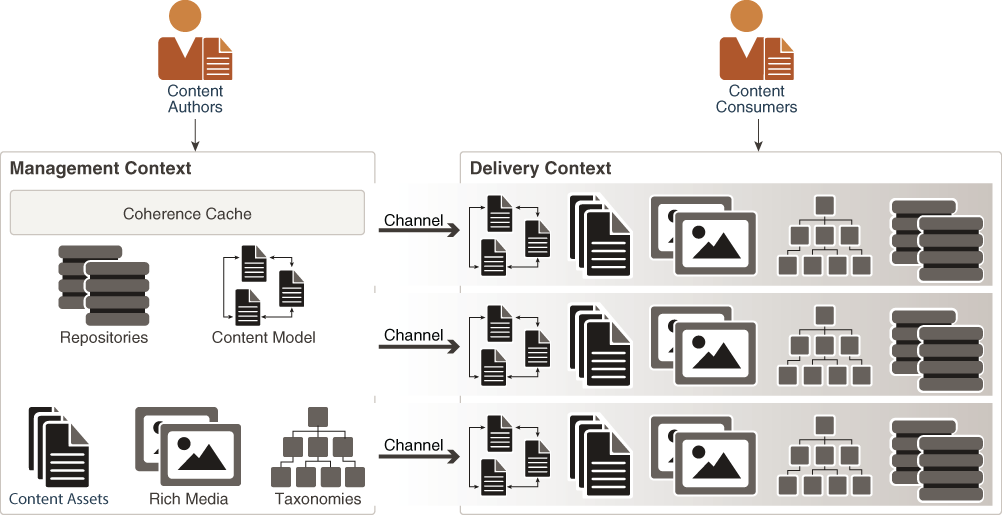
The Game-Changing Benefits of Headless CMS Systems for Businesses
As an expert in the field, I cannot stress enough how game-changing headless CMS systems are for businesses.
The ability to create and manage digital content independently of the presentation layer makes it easier to deliver a seamless customer experience
Headless CMS technology provides flexibility by decoupling front-end rendering
Implementing a seamless customer experience with a headless CMS is simple because organizations don't have to rebuild their entire website from scratch.
All they need is an API that connects the CMS backend to their frontend or app, allowing them greater control over user interface, performance optimization, and personalization features.
Faster loading speeds using Headless architecture allows developers more control over user interfaces as well as optimizing site performance leading ultimately towards higher conversion rates
With this approach comes faster load times for web pages since customers only receive what they absolutely need instead of having everything loaded all at once.
This not only improves speed but also reduces bandwidth costs while ensuring uniformity in data delivery across multiple channels like mobile devices or social media platforms where users may access different types of content.
Creating personalized experiences with omnichannel consistency becomes super flexible when integrating with Headless architectures
My Personal Insights
As the founder of AtOnce, I have had my fair share of experiences with content management systems (CMS). However, my most insightful experience was when I discovered the concept of headless CMS. At the time, we were struggling to manage our content across multiple platforms. We had a website, a mobile app, and social media accounts, each with its own unique content requirements. It was a nightmare to manage and update everything manually. That's when I stumbled upon headless CMS. The idea of separating the content management from the presentation layer was a game-changer for us. With headless CMS, we could manage all our content in one place and deliver it to any platform or device through APIs. However, implementing headless CMS was not an easy task. We had to build custom APIs and integrate them with our existing systems. That's where AtOnce came in handy. AtOnce is an AI-powered writing and customer service tool that can generate content in real-time. We used AtOnce to create custom APIs for our headless CMS and integrate them with our website, mobile app, and social media accounts. The results were astounding. We were able to manage our content more efficiently and deliver it to our customers seamlessly. Our website and mobile app load times improved, and our social media engagement increased. Overall, my experience with headless CMS and AtOnce has taught me the importance of staying up-to-date with the latest technologies and tools. It has also shown me the power of AI in streamlining business processes and improving customer experiences.Challenges You Can Face While Migrating To The Different Content Management System And Ways To Overcome Them

Migrating to a New CMS: Overcoming Challenges
Migrating to a new Content Management System (CMS) can be tough.
One of the biggest challenges is maintaining data integrity while moving from one system to another due to differences in database structure and complex configurations used by different CMSs.
Research Your CMS
To overcome this, research your old and new CMS before migrating content.
Identify similarities in both systems such as databases, configurations, file formats, etc., that will make migration smoother with minimal data loss or corruption.
Ensure Compatibility
Another challenge when switching between two completely different systems is ensuring compatibility with legacy software tools still being used within an organization.
Outdated workflows may not work properly on newer platforms; therefore optimizing these workflows must also be considered part of any migration strategy.
Identifying third-party integrations available for both current and target CMS can help plan accordingly whether they need alteration or total replacement during transition if those tools become incompatible post-migration.
Identify Third-Party Integrations
A solution would be identifying third-party integrations available for both current and target CMS so you can plan accordingly whether they need alteration or total replacement during transition if those tools become incompatible post-migration.
Handle Challenges with Expertise
In summary, migrating from one system brings unique problems requiring time and expertise.
It's crucial not only knowing what could go wrong but how we handle them without causing damage.
Future Scope Of Subscribing And Utlizing The Features Of HeaDlesS CmS
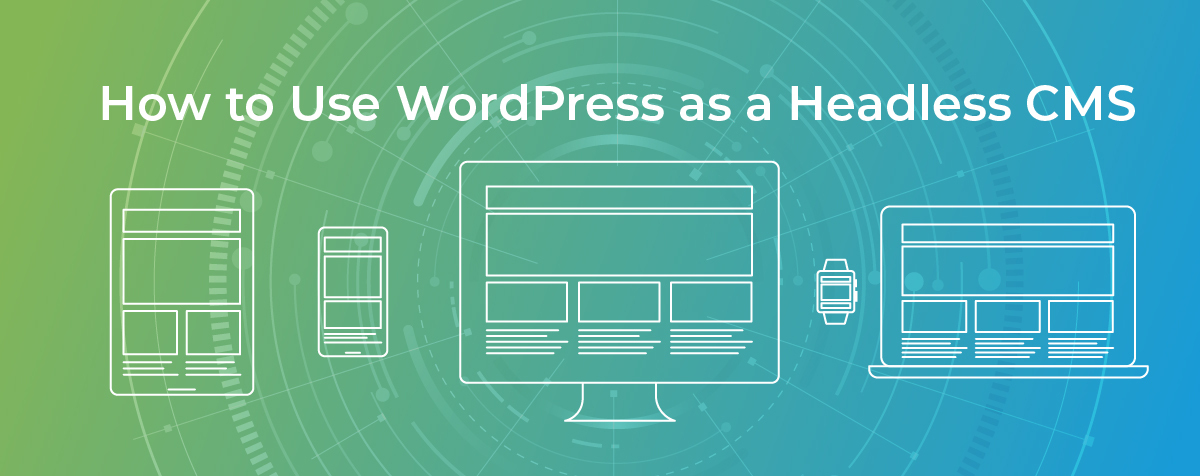
The Future of Headless CMS
In my expert opinion, Headless CMS will continue to evolve and expand in the coming years.
Its future scope of subscribing and utilizing its features not only allows businesses to keep up with rapidly changing technologies but also provides a better customer experience.
Personalization
One emerging trend that I see is personalization.
In today's world, customers expect personalized content tailored specifically to their needs.
With Headless CMS decoupling presentation from data storage, providing custom-tailored experiences for individuals has become feasible across multiple devices at scale.
Automation
Another significant feature we'll likely see more of in the future is automation.
Automation can streamline routine tasks such as updating frequently made changes or migrating content between platforms while allowing developers to concentrate on mission-critical projects.
Cloud-Based Authentication Mechanisms
Finally, cloud-based authentication mechanisms will increasingly be used by companies for secure authorization processes without requiring users always logging into each individual system separately.
Headless CMS allows businesses to keep up with rapidly changing technologies and provides a better customer experience.
To sum up my thoughts on this matter, here are five points you should consider when thinking about using or switching over to a headless CMS:
- Personalization: It allows your business site visitors/customers an optimal user experience.
- Agility: You can easily deliver richer web applications faster than before through microservices architecture.
- Better SEO Performance Efforts: Due to widened opportunities available via APIs (Application Programming Interfaces).
- Scalability & Flexibility: The ability it offers organizations' IT teams who want greater control over how they manage digital assets/content delivery systems; enabling them access new channels quickly if needed!
- Cost-Effective Solution: As there’s no need invest heavily upfront costs associated traditional monolithic architectures which require expensive hardware/software investments!
Final Takeaways
As a founder of AtOnce, I have always been fascinated by the power of technology to transform the way we work and communicate. One of the most exciting developments in recent years has been the rise of headless CMS. For those who are not familiar with the term, headless CMS is a content management system that separates the content from the presentation layer. This means that the content can be created and managed independently of the website or application that it will be displayed on. At AtOnce, we use headless CMS to power our AI writing and customer service tool. By separating the content from the presentation layer, we are able to create and manage content in a more efficient and flexible way. This allows us to deliver personalized and relevant content to our customers in real-time. One of the key benefits of headless CMS is that it allows for greater flexibility and scalability. With a traditional CMS, the content is tightly coupled with the presentation layer, which can make it difficult to make changes or updates. With headless CMS, the content can be easily repurposed and reused across multiple channels and devices. Another benefit of headless CMS is that it allows for greater collaboration and integration. By separating the content from the presentation layer, different teams can work on different parts of the project simultaneously. This can help to speed up the development process and improve overall efficiency. Overall, I believe that headless CMS is a game-changer for the way we create and manage content. At AtOnce, we are proud to be at the forefront of this exciting new technology, and we look forward to continuing to innovate and push the boundaries of what is possible.Are you tired of struggling to come up with the perfect words for your blog posts, ads, product descriptions, and emails?
Do you spend hours trying to craft the perfect message, only to end up with lackluster results?- Do you wish there was a way to easily improve your writing?
- Are you tired of constantly second-guessing your writing?
- Do you want to save time and write faster without sacrificing quality?
AtOnce's AI writing tool is designed to revolutionize the way you write.
Here are just a few of the benefits you'll experience:- Save time writing emails, ads, and product descriptions
- Improve the readability and flow of your content
- Craft attention-grabbing headlines with ease
- Reduce writer's block and increase creativity
- Generate high-quality content with ease
How It Works
AtOnce uses artificial intelligence to analyze your writing, ensuring that it is clear, concise, and highly-engaging.
Here's how it works:- Write your content as you normally would
- Copy and paste your writing into AtOnce's AI writing tool
- The AI tool analyzes your writing, providing suggestions for improvement
- Make the suggested changes and improve your content with ease
Join the Ranks of Successful Writers with AtOnce
If you want to take your writing to the next level, then there's no better tool than AtOnce's AI writing tool.
Join the ranks of successful writers and start writing content that captivates readers and drives results.What is a Headless CMS?
A Headless CMS is a content management system that separates the content from the presentation layer, allowing developers to use any technology to display the content on any device or platform.
What are the benefits of using a Headless CMS?
The benefits of using a Headless CMS include increased flexibility, scalability, and security. It also allows for easier content reuse and faster time-to-market for new digital experiences.
What are some examples of Headless CMS platforms?
Some examples of Headless CMS platforms include Contentful, Prismic, and Kentico Kontent. Each platform has its own unique features and benefits, so it's important to evaluate them based on your specific needs.
